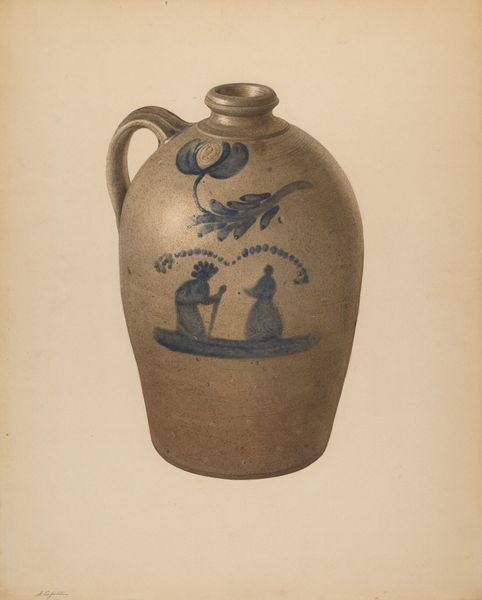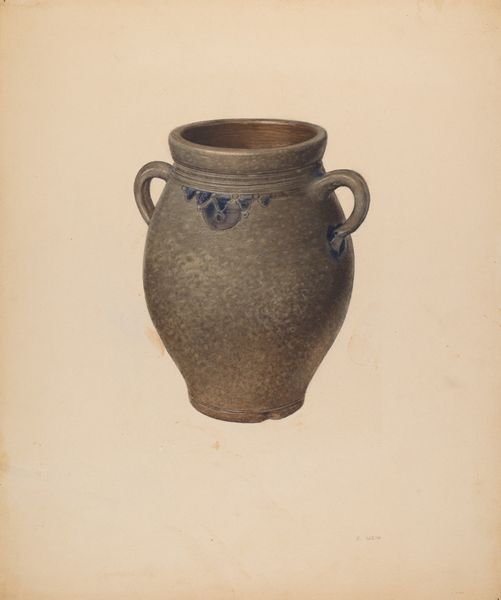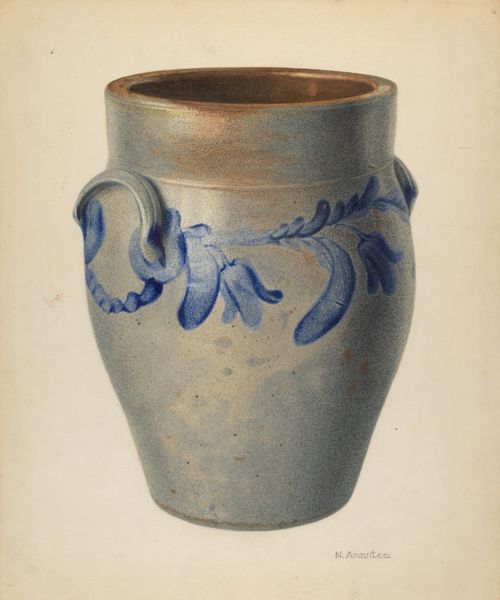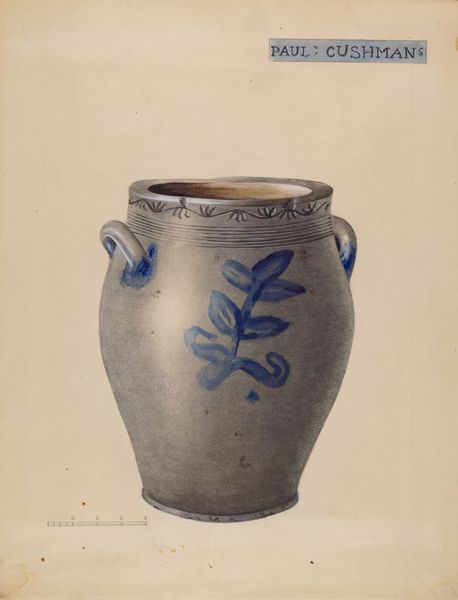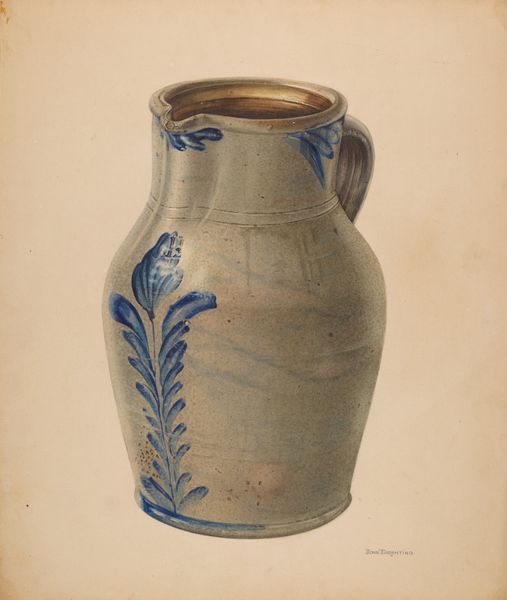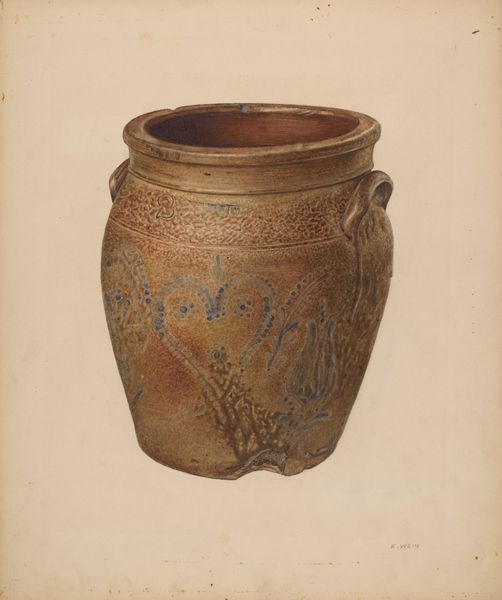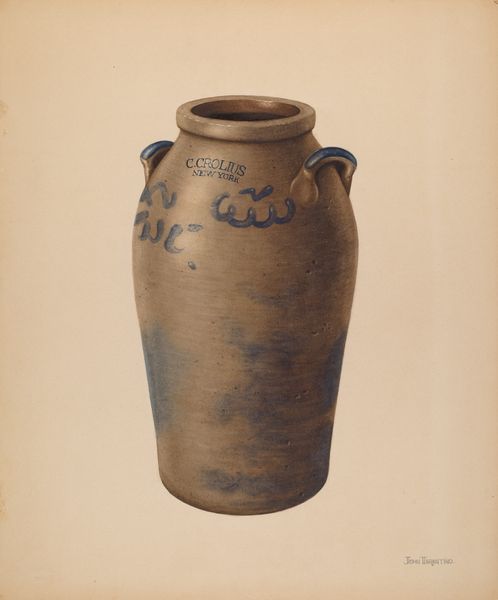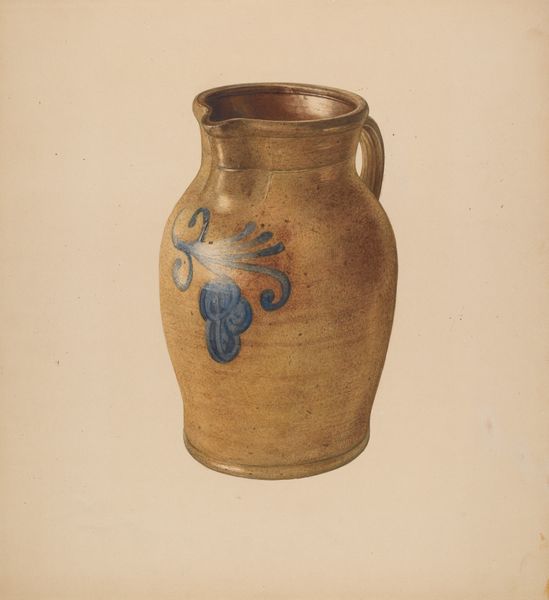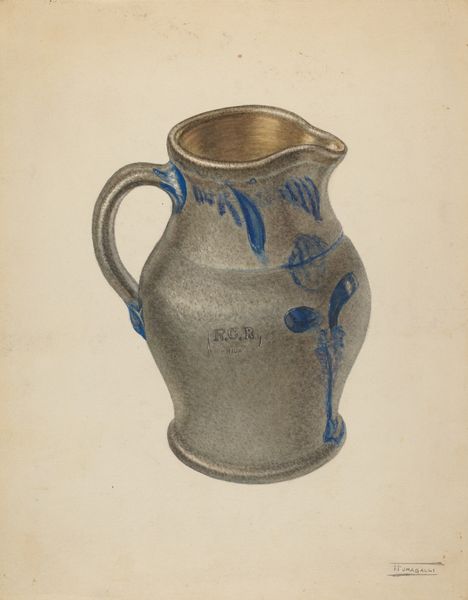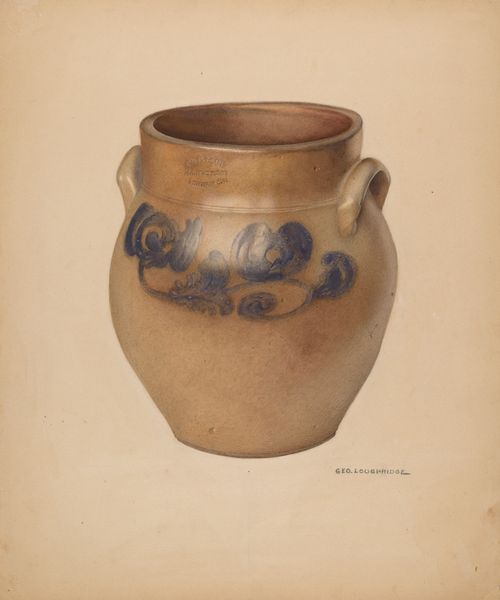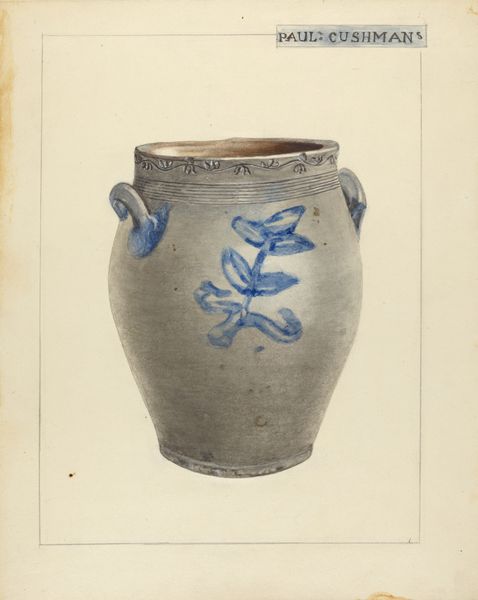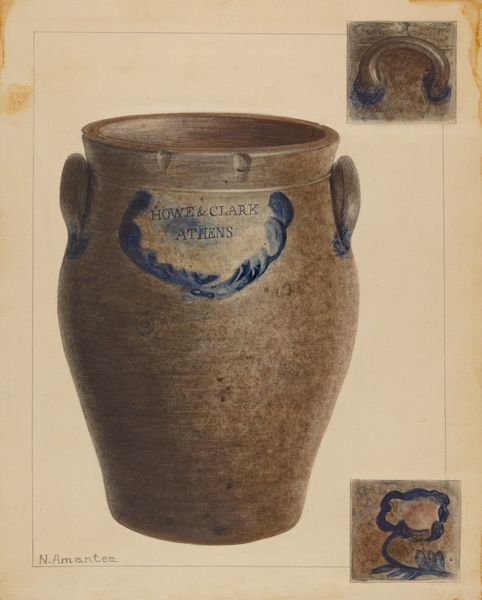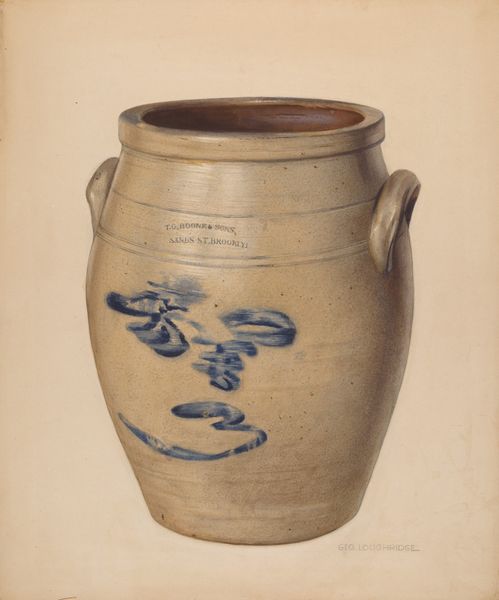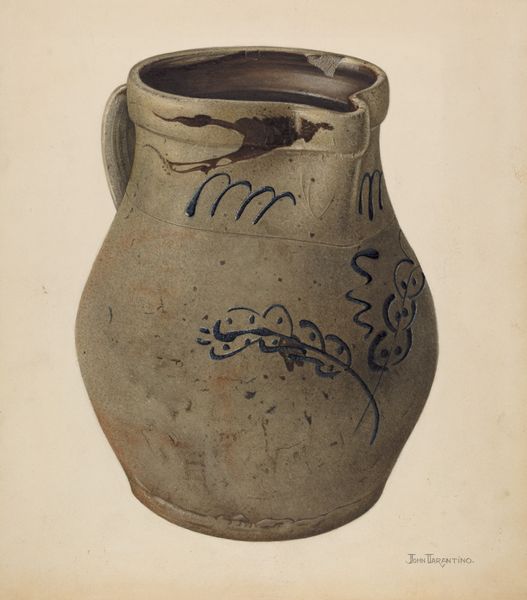
drawing, ceramic, watercolor
#
drawing
#
ceramic
#
watercolor
#
ceramic
#
regionalism
#
watercolor
#
realism
Dimensions: overall: 37.6 x 30 cm (14 13/16 x 11 13/16 in.) Original IAD Object: 6 5/16" High 4 5/8" Dia(top) 5 3/4" Dia(base)
Copyright: National Gallery of Art: CC0 1.0
This is a drawing of a small crock, likely made in the late 19th or early 20th century. George Loughridge captured this piece, paying close attention to its materiality. The crock itself is made of stoneware, a dense, non-porous clay fired at high temperatures. Notice the salt glaze, giving it a mottled surface. This was achieved by throwing salt into the kiln during firing, creating a sodium silicate coating. This was a common and efficient technique for waterproofing utilitarian vessels, widely used at the time. The maker's mark and stylized cobalt decoration suggest a context of production where individual craftsmanship met the demands of a growing market. The crock’s form, with its sturdy handles and wide mouth, speaks to its intended use for food preservation or storage. Loughridge's close study reminds us that even everyday objects can be appreciated for the ingenuity and skill embedded in their making, bridging the gap between craft and fine art.
Comments
No comments
Be the first to comment and join the conversation on the ultimate creative platform.
